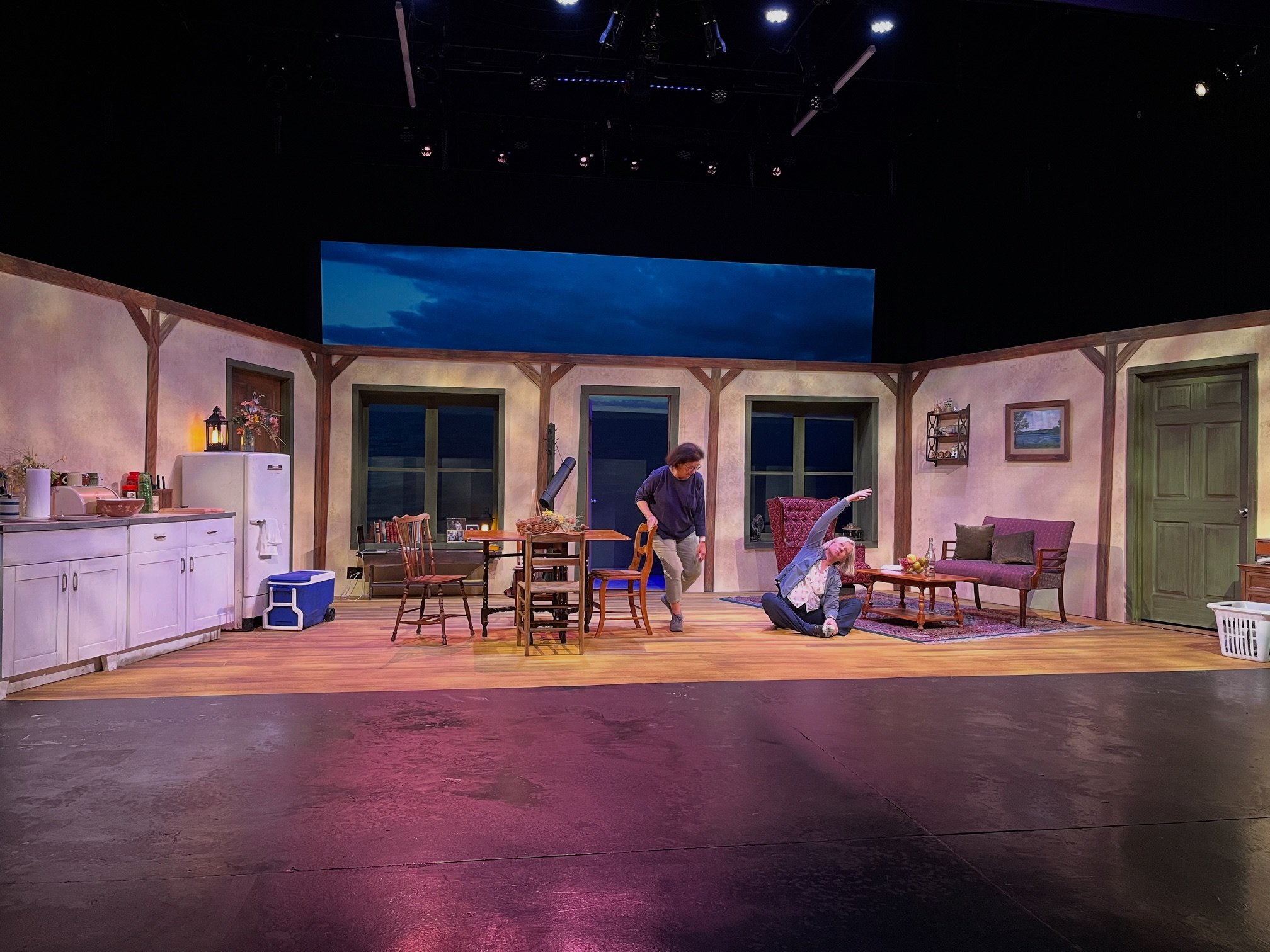DESIGNING THE CHILDREN: A SCENIC JOURNEY, BY AL COSTA
When I first read Lucy Kirkwood’s The Children, I was struck by how deceptively ordinary the setting seemed. The script calls for a seaside cottage—humble and familiar—but within those walls, three retired nuclear scientists wrestle with choices that carry the weight of a world forever changed. The design challenge was to create a room that felt lived-in and believable, while carrying a subtle sense of imbalance, as though the world outside had pressed its mark upon the space.
Research began with English coastal cottages: plaster walls, timber beams, and views that look out to the sea. What emerged as the central concept was the idea of strain—the house leaning, quietly altered by years of storms and time. In the final design, the structural timbers tilt slightly to the right. It’s not overt, but enough to suggest that something is off-kilter, that the house—and perhaps the lives within it—have shifted on its foundations.
The bay windows became essential to that idea. We were fortunate to have a projection screen on the back wall of the stage, which allowed us to create an “outside” view through them. Shifting coastal imagery—calm seas, fading light, distant horizon—kept the natural world alive beyond the room. The audience never sees the nuclear disaster directly, but the sea is always there: beautiful, fragile, and threatening at the same time.
The kitchen provided another anchor. Cabinets, a sink, and a refrigerator give the actors a world to inhabit, a place where simple routines—making tea, clearing plates—play out against larger moral questions. From there, I leaned heavily on the expertise of our props designer, who layered the room with mismatched items—dishes, chairs, small household objects—that gave the space its soul. These touches strengthened the sense of an “old world” home, where things are repaired rather than replaced, and where imperfection deepens authenticity.
The balance was always between realism and metaphor. Too much detail, and the play risks being just another domestic drama; too little, and it loses intimacy. Small choices—weathered woodwork, uneven finishes, an off-kilter structure—helped strike that line.
In the end, the design is about containment. It’s a single room, but one that holds memory, regret, and consequence. The beams lean, the windows look out toward the sea, and the cottage becomes a vessel for human lives caught between the comfort of home and the vast uncertainty pressing at the edges.

